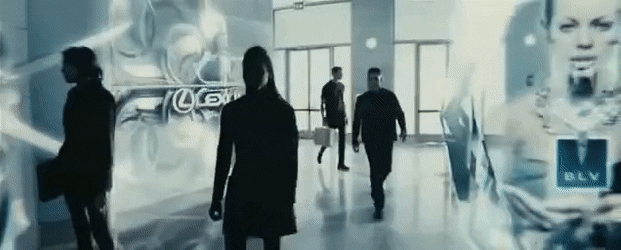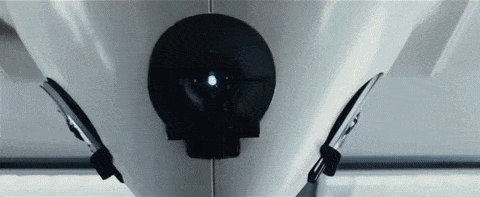
The robotic Spyders that swarm over an apartment block in Minority Report are the sinister and most direct invasion of privacy in a movie all about the horrific effects of ultimate surveillance. It is these themes and this imagery that resonates 20 years after the film’s release.
The story is from Philip K. Dick, famously paranoid acid-induced writer of the 1950s and 1960s when the Cold War and deep state conspiracies were at fever pitch. It was also made by Steven Spielberg shortly after 9/11, and can be read as an oblique response to the fall of the World Trade Center.
“Pre-Crime feels attuned to the unconstitutional policies of the George W Bush era,” Jesse Hassenger writes in The Guardian.
READ MORE: Minority Report at 20: Cruise and Spielberg test their limits in top-tier thriller (The Guardian)
The Spyders creep up and scan people’s eyeballs to check their identities — hardly a million miles from where we stand today with fingerprint device recognition and, more insidiously, the data-scraping by anonymous corporations of increasing amounts of our physical and digital activity.
They are also just one part of the police surveillance in Minority Report, an apparatus that extends to a twist on Orwell’s 1984-style thought crime.

Set in 2054, there are eye-scanning machines mounted all around the city, in public transit and in street billboards that “know” who is passing and shout out personalized advertising slogans the film portrays as invasive. Despite GDPR and other data privacy laws, the momentum toward algorithm-driven individualized perusing and pursuing of our every move is unstoppable.
“That tracking system is the most mundanely frightening part of the film’s surveillance-state future, in which you might be arrested for a crime you haven’t yet committed,” says David Sims of The Atlantic in one of a plethora of articles commemorating the film’s anniversary.
Even the autonomous vehicle, a sleekly designed Lexus, diverts course to take detective on the run John Anderton (Tom Cruise) straight to jail.

“The forward-thinking technology in the film was cooked up by experts whom Spielberg asked to envision life five decades hence, and in almost every case, advances in convenience come with insidious restrictions on personal freedom.”
READ MORE: Minority Report Tried to Warn Us About Technology (The Atlantic)
The film may not have the bleak ending that other filmmakers like David Fincher, for example, may have employed, but it is still a dark depiction of a not-so-distant future
“The result is a striking cinematic portrayal of the ways that the severe intrusion of privacy have become an irredeemable, inescapable facet of American society,” AV Club’s Mustafa Yasar II finds.
“The fact that Spielberg has historically leaned into sentimentality makes him especially prescient in depicting next-generation technology; because as Anderton demonstrates, it’s the intimacy — and power — of emotion which ultimately may mark the right (or wrong) choice between seemingly predestined futures.”
READ MORE: Minority Report at 20: How Steven Spielberg and Tom Cruise envisioned our problematic present in a not-so-distant future (AV Club)
Minority Report has a lot to answer for, not least the stimulus given to a million articles like this one about the future of the human-machine interface. Elsewhere in the film, Anderton controls the pre-cog “memory” sequence using a slick air interface and virtual monitors.
Voice and gesture commands are the likely evolution of the way we connect to the internet — and just one jump away from controlling our interaction with the digital world by thought alone. Elon Musk is putting chips into chimpanzee brains as a precursor to jacking us all into the Matrix.

One thing the film didn’t get right is its use of still photos. As Sharon Knolle points out in The Wrap, Anderton is convinced that Leo Crow is the man who abducted his son when he finds a trove of photos of children. Colin Farrell’s character is rightly suspicious of the planted pics, but we’re also doubtful that print photos will still be as much of a thing in 2054. In 2022, most people — even police looking for victims or suspects — carry those photos on their phones.

